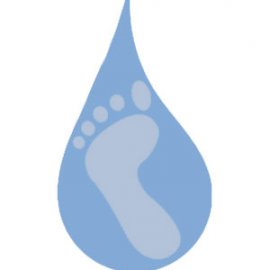Watermark (Pt. 3)
-
English
-
ListenPause
I’m Peter Neill, Director of the World Ocean Observatory. As we consider water as the new paradigm, we probably should begin not at the top of the user pyramid, but at the bottom, with a better calculation of our own water footprint, a measure of the amount used to produce each of the goods and services we use, directly and indirectly. There is an excellent online tool to help us understand this process – the Water Footprint Network, founded in the Netherlands and intended to assist individuals, companies, municipalities, and governments with water assessments, to design stewardship plans, and to offer training for new methodologies and project implementation under this new aqua-centric approach. The Network assesses three types of water as follows: Green water footprint is water from precipitation that is stored in the root zone of soil and evaporated, transpired or incorporated by plants. It is particularly relevant for agricultural, horticultural and forestry products. Blue water footprint is water that has been sourced from surface or groundwater resources and is either evaporated, incorporated into a product or taken from one body of water and returned to another, or returned at a different time. Irrigated agriculture, industry and domestic water use can each have a blue water footprint. Grey water footprint is the amount of fresh water required to assimilate pollutants to meet specific water quality standards. The grey water footprint considers point-source pollution discharged to a freshwater resource directly through a pipe or indirectly through runoff or leaching from the soil, impervious surfaces, or other diffuse sources. Each of these requires an evaluation and strategy particular to use, place, and time, for an individual, a business, a product, or a nation using a standard that, according to the Network website, “has been applied and tested worldwide across many sectors and includes detailed instruction and guidance on the following: • How to calculate the green, blue and grey water footprint to understand the geographic and temporal allocation of water resources for industry, agriculture and domestic water supply; • How to conduct a water footprint sustainability assessment which includes criteria for understanding the environmental sustainability, resource efficiency and social equity of water use, for both consumption and pollution; • How to use the results of the water footprint accounting and sustainability assessment to identify and prioritize the most strategic actions to be taken in local, regional, national and global scales, individually and collectively. The Network provides an extensive data site, called WaterStat, a comprehensive collection of research and statistics about international, national scarcity, pollution, and product water footprints against which to compare baselines and set objectives. The website also makes available a free online assessment application that allows the user to complete both a geographic assessment to explore the water footprint of a river basin, its sustainability and ways to reduce consumption or a production assessment to quantify and map operational and supply-chain water footprint as a specific facility or product, to maintain sustainability, and to identify ways to reduce use going forward. Why not try it for yourself? Go to Waterfootprint.org and use the personal water footprint calculator. I just did, and my footprint was estimated at 772 cubic meters of water a year as follows: Food 654 (57 cereal, 335 meat, 7 vegetables, 18 fruit, 108 dairy, and 130 others), Industry was 16, and Domestic 102. 772 cubic meters! Image the volume if you can. The terrifying thing is that the global assessment using the same criteria is 1243 cubic meters – 471 more! I am a water-miser. What can I do more? Eat less meat and dairy, obviously, more vegetables and fruit; make sure every member of my household is equally water conscious; and spread the word about changing our “water mark”, not just as a response to dry or drought, not just for a healthy me or family, not just for the here and, now, but for everyone, everywhere, for a healthy planet. We will discuss these issues, and more, in future editions of World Ocean Radio.
The global water crisis and the prospects for future water resources is forcing adjustments for how we measure the water that is used, how it is valued, and how (and to whom) it is allocated. In this third episode of a multi-part series on water, host Peter Neill will introduce the Water Footprint Network, an online tool which was developed to help individuals, companies, municipalities, and governments with water assessments, to design stewardship plans, and to get a better understanding of the sustainability of our water footprint.
About World Ocean Radio:
Peter Neill, Director of the World Ocean Observatory and host of World Ocean Radio, provides coverage of a broad spectrum of ocean issues from science and education to advocacy and exemplary projects. World Ocean Radio, a project of the World Ocean Observatory, is a weekly series of five-minute audio essays available for syndicated use at no cost by college and community radio stations worldwide. A selection of episodes is now available in Portuguese, Spanish, French, Swahili, and Mandarin, enabling us to reach 75% of the world's population. For more information, visit WorldOceanObservatory.org/world-ocean-radio-global.
Resources from this Episode:
< Waterfootprint.org | Personal Water Footprint Calculator
More episodes from the Watermark series:
< Watermark, Pt. 1
< Watermark, Pt. 2
< Watermark, Pt. 4
< Watermark, Pt. 5
- Login to post comments



